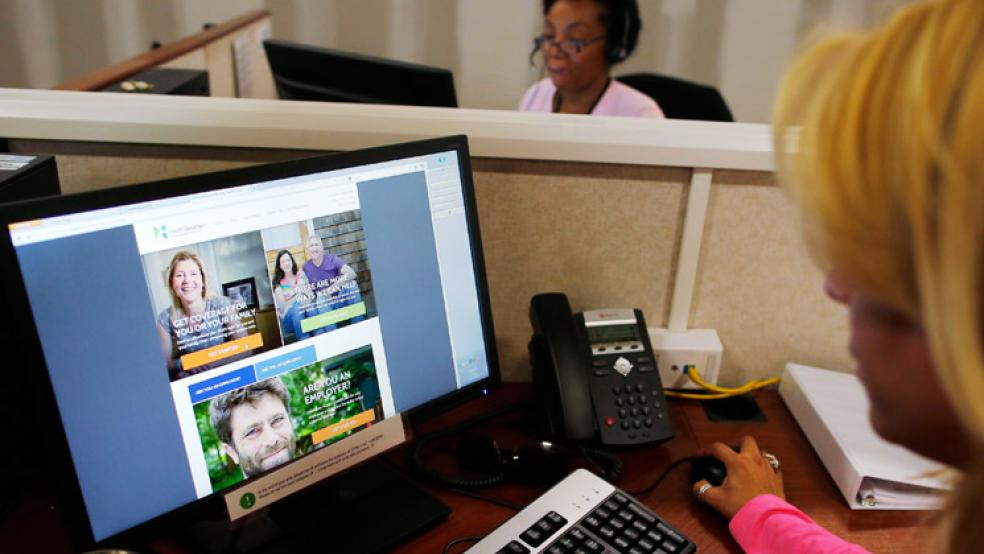The White House finally released its much anticipated enrollment numbers on Wednesday, revealing that some 106,000 Americans selected insurance policies on the state and federal health exchanges in October, the first month those marketplaces went live.
While the report offers some insight into the demand for the new policies – about 1.5 million people have applied for coverage – it lacks specific information, like who is enrolling and how many people have actually purchased plans.
Related: Bill Clinton Just Undercut Obama’s Health Plan
In order to determine how Obamacare is really shaping up, the administration must answer these four crucial questions:
1. How many people are actually purchasing plans? The administration’s official tallies included the number of applications completed on the various exchanges (1.5 million), the number of those people who would be eligible to enroll under an exchange (1.1 million) and the number of individuals who have chosen a specific insurance plan (106,000.)
However, "selecting" a plan and actually buying it are different things – much like adding an item to your shopping cart on Amazon.com is different from actually buying it.
We know that 106,000 Americans have put specific plans in their carts-- just 27,000 of those were on the federal exchange. Health and Human Services Secretary Kathleen Sebelius said the administration would provide more details on Dec. 15 about how many people have actually paid for a policy.
2. Who is enrolling? The numbers released on Wednesday are just a “snapshot” of the actual data, and don’t include a demographic breakdown of those signing up for plans. That information, which will be a crucial indicator of how successful the entire health care reform law will be, is not ready yet, Sebelius told reporters on a conference call Wednesday.
The key will be how many young, healthy Americans (ages 18-34) have signed up for coverage. The administration has estimated that it needs at least 2.4 million healthy “young invincibles” to enroll through the insurance exchanges in order to offset costs for other Americans who are more likely to rack up higher medical bills. If the administration doesn’t meet its goal, insurance companies will likely have to raise the cost of monthly premiums, potentially setting off a cycle of decreasing enrollments and higher prices that could spell the end of Obamacare.
The federal government has spent at least $1.25 billion marketing the new health care law — especially to this younger generation. Even after Wednesday’s update, it’s still not clear whether those outreach efforts are working.
Related: The Hidden Flaw in the Obamacare Marketing Plan
3. When will the website be glitch-free? Administration officials have tirelessly repeated that HealthCare.gov will be “running smoothly for the vast majority of users by Nov. 30” but they have left so much wiggle room in their statements that it is not clear what that actually will mean.
For example, CMS officials say consumers will be able to log on to the site, create an account and enroll in a plan without experiencing any errors — but will the site be able to accurately transfer information to insurance companies? That question continues to concern insurance companies that have received inaccurate or incomplete user data, a problem that has slowed the enrollment process, forcing many application processors to have to recheck the information manually.
The website has also experienced unexpected outages to its main federal data hub twice in the last month, on top of continuous technical problems that have caused many consumers, lawmakers and tech experts to question whether the website will actually be fixed by the White House’s deadline.
Last Friday, Jeff Zients, former White House budget director who has been tapped to lead the repair efforts, said the website is “a long way from where it needs to be.” Zients explained to reporters that while some areas of the website are improving, higher volumes of visitors are bringing to light new capacity and software issues.
4. How much will the website and all these emergency repairs cost? Several estimates suggest that HealthCare.gov has already cost more than $600 million, as technical troubles continue to crop up.
It’s difficult to know exactly how much the website has cost, though – so difficult that some of the main people working on the project don’t even know, or so they testified during a congressional oversight hearing on Wednesday. The Obama administration’s top IT officials in charge of HealthCare.gov couldn’t tell lawmakers how much it cost to fix the website or how much the total cost of the website has been so far. The site was built and is being fixed by outside contractors, and government contracts are complicated and are typically doled out in multiple year increments.
The White House’s inability to provide clear answers about how much the entire website and its repair effort will cost has infuriated lawmakers — especially politically vulnerable Democrats facing election in 2014. Sen. Kay Hagen (D-NC), who faces a tough race next election cycle, has called for the Government Accountability Office and the Health and Human Services Inspector General to investigate how much the federal Obamacare marketplace was originally estimated to cost and how much it will end up costing taxpayers.
Follow Brianna Ehley on Twitter @BriannaEhley
Top Stories From the Fiscal Times:





